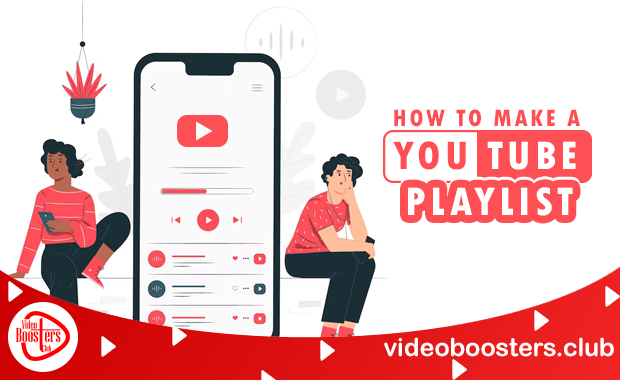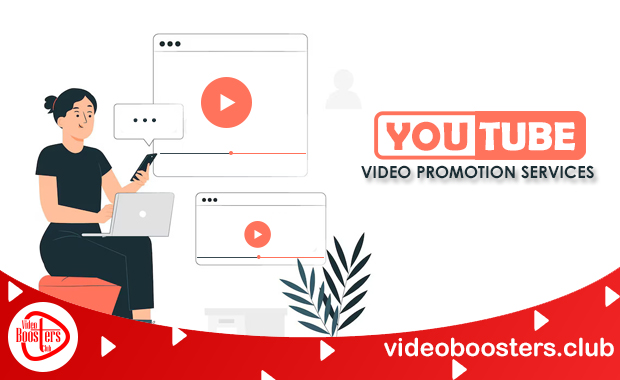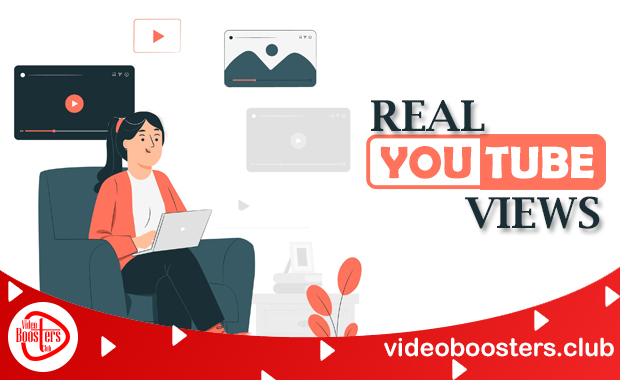
Every successful YouTube creator knows that engaging content is just one piece of the puzzle. To truly captivate your audience and build a successful YouTube channel, you need to know how to make a YouTube playlist that not only organizes your videos but also encourages binge-watching.
A well-crafted playlist can guide viewers through a curated experience, keeping them hooked on your channel for longer and improving crucial metrics like watch time and viewer retention. It’s a powerful tool that can help you build a stronger connection with your audience and grow your presence on the platform.
But creating an effective playlist isn’t as simple as grouping videos together. It necessitates a methodical approach to promotion, video selection, titles, and descriptions. Whether you’re looking to showcase a niche topic, promote your most popular videos, or create a learning series, playlists offer endless opportunities to engage viewers and stand out on this platform.
In this guide, we’ll walk you through everything you need to know about making impactful playlists, complete with tips and tricks to maximize their potential.
What is a YouTube Playlist?
A carefully chosen group of videos arranged in a consecutive fashion that may be played automatically one after the other is called a YouTube playlist. These videos can be created by the same creator or pulled together from different channels.
For example, if you’re a cooking enthusiast, you can create a playlist featuring all your breakfast recipes or curate a list of the top 10 pasta-making tutorials from various creators. Playlists not only simplify content organization but also enhance user experience by offering a seamless viewing journey.
Key Features of YouTube Playlists:
- Auto-play Functionality: Viewers can watch multiple videos without needing to click “next.”
- Customization Options: Creators can edit titles, descriptions, and even choose a playlist thumbnail for better branding.
- Visibility Across Channels: Playlists can appear in search results, channel pages, and even external websites.
Stat Fact: According to YouTube, playlists can increase the total watch time on your channel by up to 30%.
Why is YouTube Playlist Important For YouTube Content Creators
Playlists aren’t just about grouping similar videos; they serve as a strategic tool to boost your channel’s performance. Here are some reasons why all creators must use them:
1. Boost Watch Time
YouTube algorithm prioritizes channels with higher watch times. Playlists encourage viewers to watch multiple videos in one session, which directly contributes to your channel’s performance metrics.
2. Improve Discoverability
Playlists rank in YouTube’s search results and even on Google. When optimized with relevant keywords like “how to Increase YouTube Subscribers,” your content is more likely to be found by viewers.
3. Enhance Viewer Experience
Playlists create a logical flow, making it easier for users to navigate through your content. For instance, a fitness channel can create separate playlists for cardio, strength training, and yoga sessions, simplifying the journey for viewers.
4. Promote Binge-Watching
When viewers dive into one video in a playlist, they’re more likely to continue watching the rest. This leads to longer engagement times and can result in more ad revenue for creators.
5. Strengthen Channel Branding
Playlists give artists a platform to demonstrate their proficiency in particular fields. They also give your channel a polished, organized appearance.
Special Tips on How to Make a YouTube Playlist
Creating a YouTube playlist isn’t just about grouping videos; it’s about strategically organizing your content to maximize engagement and watch time. By following these tips, you can design playlists that not only keep viewers watching but also boost your channel’s discoverability and performance.
Create a Playlist With a Clear Purpose
Every playlist should have a well-defined theme or purpose. Think about what value you’re offering to your audience and organize videos accordingly. For example, a fitness channel can create separate playlists for cardio workouts, yoga sessions, and strength training exercises, ensuring viewers can easily find content that suits their needs.
When playlists are purpose-driven, they attract viewers searching for specific topics and encourage them to watch multiple videos in one sitting.
Use Relevant Titles With Keywords
The title of your playlist plays a crucial role in improving its discoverability. It needs to be interesting, thorough, and contain the right keywords. For instance, instead of naming your playlist “My Videos,” opt for something like “Easy DIY Projects for Beginners” or “How to Make a YouTube Playlist for Beginners.”
Keyword research tools like Google Keyword Planner or YouTube’s auto-suggest feature can help you identify popular search terms. Incorporating these keywords naturally into your title increases the chances of your playlist appearing in search results, increasing more traffic to your channel.
Optimize Playlist Descriptions
While many creators overlook the description box, it is a powerful tool for improving YouTube SEO and providing context for your playlist. A well-written description not only explains what the playlist is about but also helps YouTube’s algorithm categorize your content correctly. For example, a description for a travel playlist could read: “Explore the world with our collection of travel vlogs, featuring destinations like Paris, Tokyo, and New York. Perfect for those planning their next adventure!”
It will score higher in search results if you incorporate primary and secondary keywords inside the first 100 characters of your playlist. You can also use this space to include links to related playlists or your social media profiles to drive additional engagement.
Add High-Quality and Relevant Videos
The videos you add to your playlist should align closely with its theme. Irrelevant or low-quality content can frustrate viewers and lead to drop-offs. To keep your audience engaged, focus on including videos that are informative, entertaining, and directly relevant to the playlist’s purpose.
Additionally, placing your most popular or engaging video at the top of the playlist can serve as a hook to encourage viewers to continue watching. For instance, a tech review playlist might start with a viral video on the latest smartphone before diving into detailed comparisons or tutorials.
Organize Videos Strategically
Viewer retention can be greatly affected by the sequence in which the videos are in your playlist. Start with the most engaging video to grab attention, and arrange subsequent videos in a logical sequence that enhances the viewing experience and help in gaining YouTube channel subscribers.
For example, a playlist on learning a new language might begin with basic vocabulary lessons before progressing to intermediate grammar tutorials. By creating a flow that makes sense to the viewer, you increase the chances of them watching the entire playlist.
Choose Eye-Catching Thumbnails
Since they are the first thing that visitors see, YouTube thumbnail is quite important in getting clicks. While each video in the playlist has its own thumbnail, you can select a thumbnail for the playlist itself to establish a cohesive and professional look. Using vibrant colors, bold text, and consistent branding across thumbnails can make your playlist stand out.
For example, a cooking playlist could feature a delicious-looking dish with text like “Quick Recipes Under 30 Minutes” to entice viewers. Playlists with custom thumbnails have been shown to receive higher click-through rates, making this step essential for maximizing visibility.
Promote Your Playlist Across Platforms
Once your playlist is ready, promoting it effectively is key to reaching a larger audience. Share the playlist link on your social media channels with engaging captions or short teaser clips to generate interest. If you have a blog or website, consider embedding the playlist in relevant articles. For instance, a fitness blogger could embed a “Home Workout” playlist in a post about exercising without equipment.
You can reach a wider audience by collaborating with other YouTubers to cross-promote playlists. For example, a travel vlogger partnering with a food blogger can create a playlist that combines travel destinations with local cuisine.
Encourage Viewer Engagement
Engagement is a two-way street, and involving your audience in the playlist creation process can build loyalty. Ask viewers for suggestions on what videos to include in your playlists or what topics they’d like to see next.
Including calls-to-action in your video descriptions or on-screen prompts, such as “Check out our playlist for more tips!” can guide viewers to explore more content. Engaging with viewers through comments on playlist videos further strengthens the connection and encourages repeat visits.
Monitor Playlist Analytics
YouTube Analytics provides valuable insights into how your playlists are performing. Metrics such as watch time, traffic sources, and viewer drop-off rates can help you identify strengths and areas for improvement.
For example, if a particular video in your playlist has a high drop-off rate, consider replacing it with a more engaging one. Regularly reviewing analytics allows you to refine your playlists to better meet your audience’s preferences and keep them watching longer.
Update Playlists Regularly
Playlists that remain static over time can lose their appeal. Keep your playlists fresh and relevant by adding new videos, updating descriptions with trending keywords, and removing outdated or underperforming content.
For instance, a playlist on “Top Tech Gadgets” can be updated yearly to reflect the latest innovations. Regular updates show your audience that you’re active and invested in providing them with the best content.
Utilize Playlist Privacy Settings
YouTube’s privacy settings allow you to control who can access your playlists. Public playlists are discoverable by anyone and ideal to promote YouTube video. Private playlists are useful for organizing videos you don’t want others to see, such as draft content or research materials.
Unlisted playlists, on the other hand, are perfect for sharing exclusive content with a specific audience, such as patrons or collaborators. Using these settings strategically ensures you get the most out of your playlists while maintaining control over your content.
Leverage Collaborative Playlists
Collaborative playlists allow you to invite others to add videos, making them ideal for group projects or community-driven content. For example, a group of travel vloggers can create a shared playlist showcasing their favorite destinations, providing viewers with diverse perspectives while increasing exposure for all contributors.
Collaboration not only enhances the playlist’s value but also strengthens relationships within your niche community.
Conclusion
Crafting and optimizing a playlist requires effort and strategy, but the results are worth it. By following these tips, you can create playlists that not only improve your channel’s performance metrics but also provide value to your audience. Regular updates, promotion, and viewer engagement are key to ensuring your playlists remain effective and relevant in the ever-changing YouTube platform.


